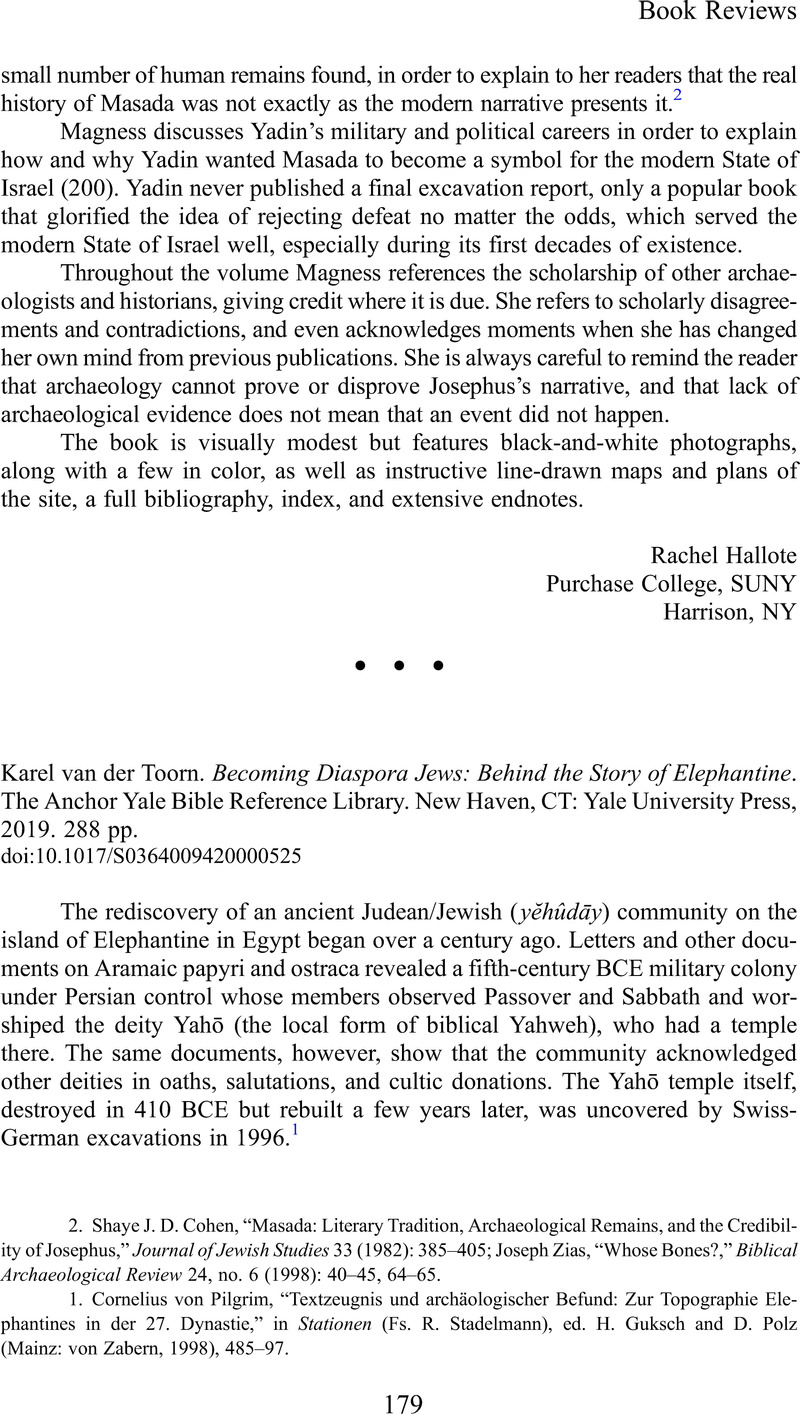No CrossRef data available.
Article contents
Karel van der Toorn. Becoming Diaspora Jews: Behind the Story of Elephantine. The Anchor Yale Bible Reference Library. New Haven, CT: Yale University Press, 2019. 288 pp.
Published online by Cambridge University Press: 16 April 2021
Abstract

- Type
- Book Reviews: Judaism in Antiquity and Rabbinics
- Information
- Copyright
- Copyright © Association for Jewish Studies 2021
References
1. Cornelius von Pilgrim, “Textzeugnis und archäologischer Befund: Zur Topographie Elephantines in der 27. Dynastie,” in Stationen (Fs. R. Stadelmann), ed. H. Guksch and D. Polz (Mainz: von Zabern, 1998), 485–97.
2. The classic study of the Elephantine community is Porten's, Bezalel Archives from Elephantine (Berkeley: University of California Press, 1968)Google Scholar. For more recent treatments of the religion of Elephantine, see Rohrmoser, Angela, Götter, Tempel und Kult der Judäo-Aramäer von Elephantine (Münster: Ugarit-Verlag, 2014)Google Scholar, and Granerød, Gard, Dimensions of Yahwism in the Persian Period (Berlin: de Gruyter, 2016)CrossRefGoogle Scholar.
3. Papyrus Amherst 63 (Münster: Ugarit-Verlag, 2018). Many passages remain open to radically different readings due to the complicated relation between the Aramaic-Demotic interface and the underlying Aramaic. My own edition of P. Amherst 63 will soon appear in the Society of Biblical Literature series, Writings from the Ancient World.
4. E.g., Rohrmoser, Götter, 150–52.
5. Sommer, Michael, Palmyra: A History, trans. Sommer-Theohari, D. (London: Routledge, 2018), 14–52Google Scholar.
6. For instance, he mistakes sy for tm in bʔḫrtʔsʔ• syʔr•, rendering the Aramaic phrase as bḫlṣ tmr, “[he has placed you] in a fortress of palms” (xvi 7). Moreover, he unaccountably reads the Hebrew word ʔytn, “perennial source,” as another reference to the oasis (ix 22, 23; xiv 15; xvi 8, 9).
7. On the prominence of Nanay on the papyrus, see my article, “Nanay and Her Lover,” Journal of Near Eastern Studies 76 (2017): 1–37. By contrast, Anat is mentioned explicitly only once (viii 9).
8. See, for instance, Clemens Kuhs, “Das Dorf Samareia im griechisch-römischen Ägypten” (master's thesis, Institut für Papyrologie, Heidelberg, 1996).





